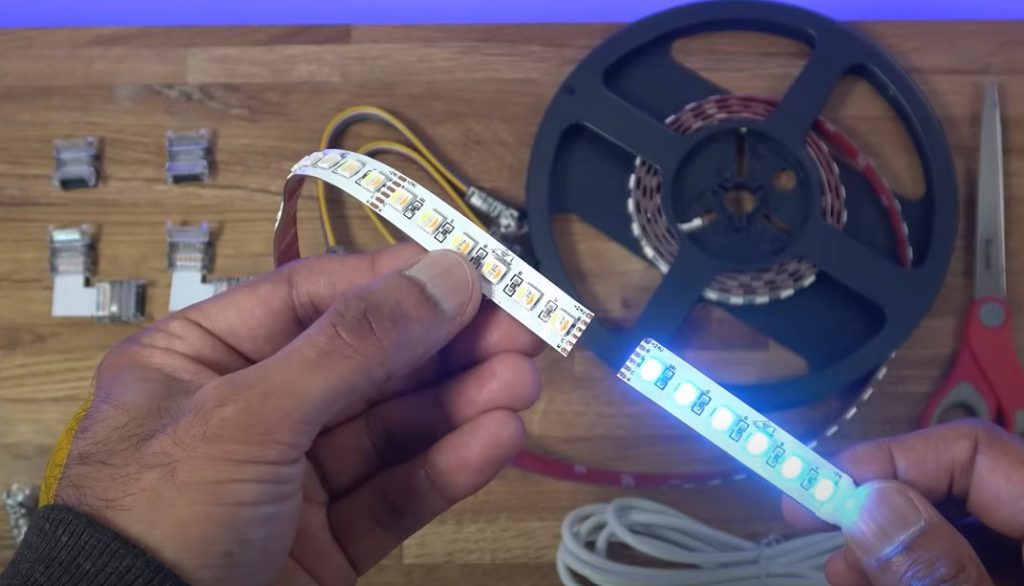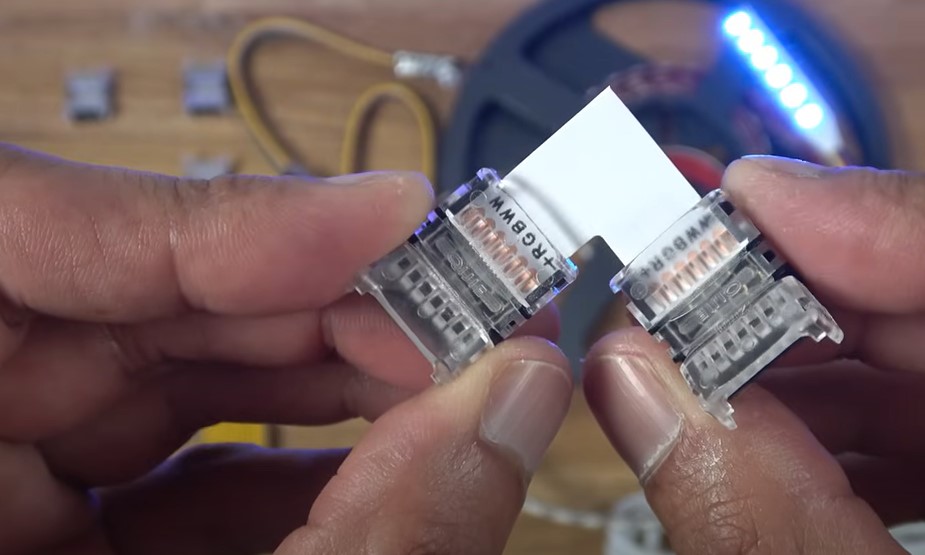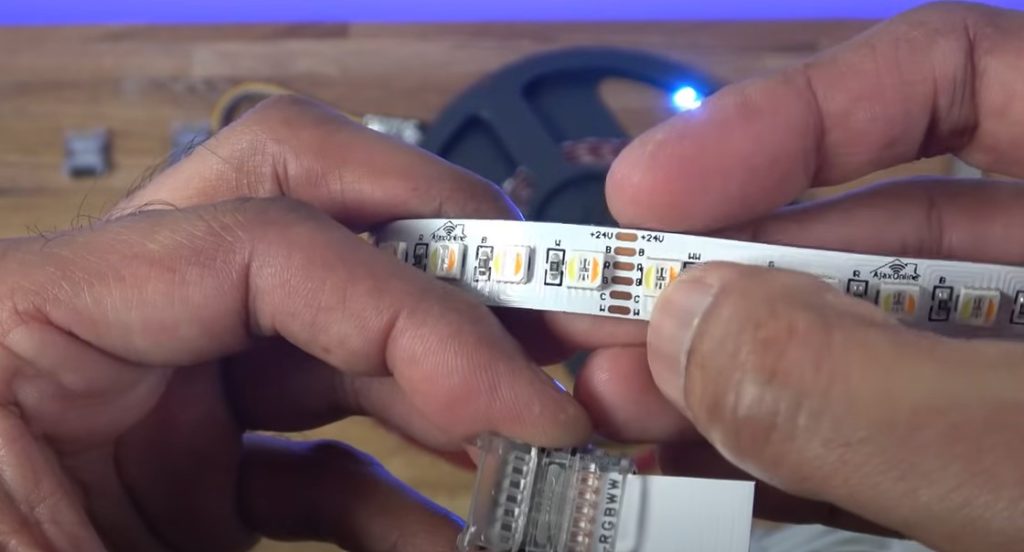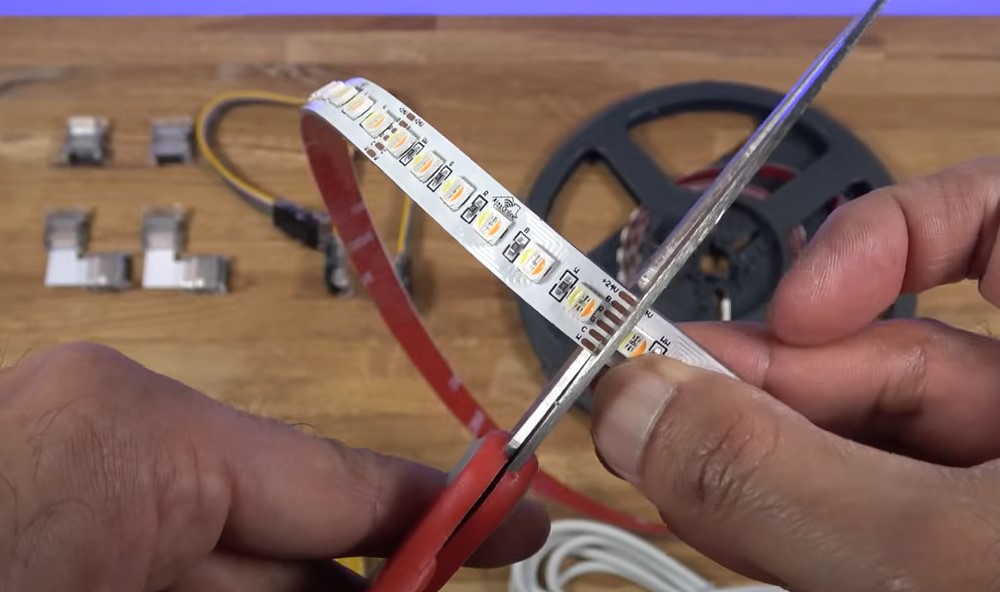Can You Cut LED Light Strips? A Comprehensive Guide
LED light strips have revolutionized home lighting, offering versatility and affordability. But a common question arises: can you cut LED light strips? This comprehensive guide will answer that question and delve into the intricacies of cutting, connecting, and using LED light strips effectively. We’ll cover everything from identifying cuttable strips to troubleshooting common problems, ensuring…
LED light strips have revolutionized home lighting, offering versatility and affordability. But a common question arises: can you cut LED light strips? This comprehensive guide will answer that question and delve into the intricacies of cutting, connecting, and using LED light strips effectively. We’ll cover everything from identifying cuttable strips to troubleshooting common problems, ensuring you can confidently work with these versatile lighting solutions. You’ll learn about different strip types, appropriate tools, safety precautions, and much more. Let’s dive in!
LED light strips consist of a flexible circuit board populated with numerous small LED lights. They are typically powered by a low-voltage DC power supply, usually 12V or 24V. The strips themselves are incredibly versatile, allowing you to create customized lighting solutions for various applications, from under-cabinet lighting to accentuating architectural features.
Can You Cut LED Light Strips?
The answer is Not all LED light. Let’s drive the main point so that you can get a clear concept.
strips are created equal. Some are designed to be cut, while others are not. Understanding the differences is crucial. Look for markings on the strip indicating cuttable points, usually every few LEDs or inches. These cut points usually have clearly marked copper pads.
Cuttable LED Strips

These strips have designated cutting points indicated by small scissors or dotted lines on the PCB. Cutting at these points ensures you don’t damage the internal circuitry and allows for proper connection.
Non-Cuttable LED Strips
These strips are typically found in pre-assembled, rigid lighting fixtures and cannot be shortened or modified without causing irreversible damage.
Identifying Cuttable LED Strips
Before attempting to cut an LED strip, carefully examine the strip itself. Look for markings, often printed every few inches, indicating the designated cutting points. These markings are usually small scissors or dotted lines. If you don’t see these markings, it’s best to assume the strip isn’t designed to be cut.
Tools Needed for Cutting LED Strips
Cutting LED strips requires precision to avoid damaging the delicate circuitry. The best tool is a sharp pair of scissors designed for electronics work. Avoid using dull scissors or knives, as these can cause the copper traces to fray and create short circuits.
The Cutting Process: A Step-by-Step Guide

Once you’ve identified the cut points and gathered the right tools, cutting the strip is relatively straightforward. Place the strip on a flat, stable surface. Carefully align the scissors with the designated cutting line and make a clean, straight cut. Avoid applying excessive pressure to prevent damage to the circuit board.
Connecting Cut LED Strips
After cutting, you’ll need to connect the strip to the power supply and other components. This typically involves soldering the cut ends to the appropriate connector. If you are not comfortable with soldering, connector kits are available that use push-in connections and require no soldering skills. Always refer to the manufacturer’s instructions for your specific LED strip.
Safety Precautions
Always work with caution when cutting and connecting LED strips. Avoid touching the exposed circuitry, and ensure the power is off before working on the strip. Never force the strip or tools, as this could damage the circuitry or cause injury.
Troubleshooting Common Problems
If your LED strip doesn’t work after cutting, there are a few common issues to troubleshoot. Firstly, verify the connections to ensure they are secure. Secondly, check the power supply to ensure it’s providing the correct voltage and amperage. Thirdly, examine the cut points for any damage to the copper traces. If any traces are broken, the strip might be beyond repair.
Different LED Strip Configurations

LED strips come in various configurations, such as single-color, RGB (Red, Green, Blue), and RGBW (RGB with White). RGB strips are particularly versatile, offering a range of color options. RGBW strips usually offer warmer whites compared to standard RGB implementations.
Power Supply Considerations
The power supply must match the voltage and amperage requirements of the LED strip. Connecting an incorrect power supply can cause the LEDs to malfunction or even damage the strip. Always check the specifications of both the strip and the power supply before making any connections.
Using LED Strip Controllers
LED strip controllers offer advanced control over the lights, allowing you to adjust brightness, color, and various effects. These controllers usually connect to the LED strip via a connector, providing a convenient way to manage your lighting.
Mounting and Installation Techniques
Depending on the application, several mounting options exist. Adhesive backing is frequently found on the strip, simplifying installation. Other methods include using clips or channels designed specifically for LED strips. Properly securing the strip ensures even lighting and long-term durability.
Creative Applications of Cut LED Light Strips

The ability to cut LED light strips opens a world of customization. You can create unique lighting solutions for under-cabinet lighting, cove lighting, accent lighting, backlighting for TVs or monitors, and even artistic light installations. The only limit is your imagination.
Cost Considerations and Comparison Shopping
LED light tube or strips are relatively inexpensive, but the price varies depending on features such as color, length, and brightness. Comparing prices from different suppliers is essential to find the best value for your project.
Choosing the Right LED Strip for Your Project
Selecting the appropriate LED strip requires consideration of several factors, including color, brightness, length, voltage, and IP rating (water resistance). Carefully assess your needs before purchasing to ensure a successful outcome. Factors like required length and desired brightness will dictate the appropriate power supply as well.
Comparison of LED Strip Brands
Various brands offer LED light strips, each with its own strengths and weaknesses. Some brands are known for their reliability, while others offer more affordable options. Researching different brands and reading reviews can help inform your purchasing decision.
Long-Term Maintenance and Durability
With proper installation and care, LED light strips can last for many years. Avoid exposing them to excessive heat or moisture, and ensure the connections remain secure to prevent any issues over time.
Frequently Asked Questions
What are the common mistakes when cutting LED strips?
Common mistakes include cutting outside the designated cutting points, damaging the copper traces, improper soldering, and using the wrong tools. Always double-check markings and ensure clean cuts.
Can I connect two cut LED strips together?
Yes, but you need the correct connectors and often need soldering skills. Use appropriate connectors to create a reliable connection between the two sections.
Related Article: LED Strip Light Diffusers: The best ways
How do I determine the correct power supply for my LED strip?
The power supply’s voltage must match the LED strip’s voltage (usually 12V or 24V). The amperage should be sufficient to power the entire length of the strip; otherwise, the lights might be dim or may not work correctly.
What is the difference between 12V and 24V LED strips?
24V strips can typically handle longer lengths without voltage drop, making them suitable for larger installations.
How do I choose the right type of adhesive for mounting?
Many LED strips have adhesive backings, but you might need additional adhesive for more secure mounting. Choose an adhesive suitable for the surface and the conditions of where you’re installing the lights.
What happens if I cut an LED strip at the wrong point?
Cutting outside the designated points can sever internal circuitry and render a portion or the entire strip non-functional.
Final Thoughts
Cutting LED light strips can be a straightforward process if you follow the guidelines provided. Remember to always identify the cut points, use the correct tools, and prioritize safety. By carefully considering the various factors discussed in this guide – from choosing the right strip to understanding power supply requirements – you can confidently customize your lighting to meet your individual needs. This allows for creative and practical lighting solutions, enhancing both the aesthetics and functionality of your space. The versatility and affordability of LED light strips make them an excellent choice for a wide range of lighting projects, both for home use and professional applications.

